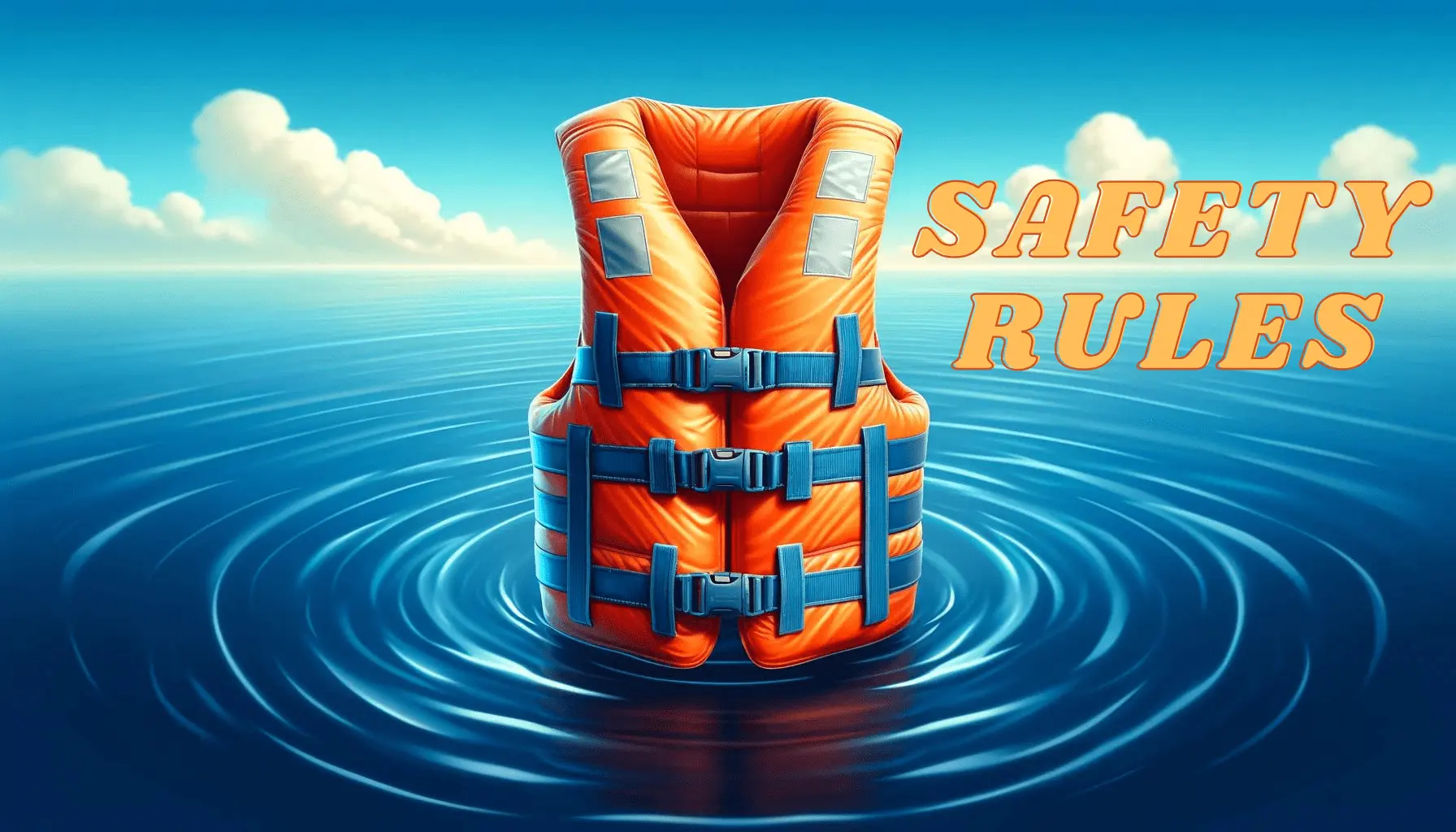How does a fat person get in a kayak? This is a question that big people often ask. Personally, I have the most average build, but I know some big, heavy people and sometimes meet them on the water. And you know what? They don’t have any big problems with kayaking. They get in and out of the kayak easily.
This means that everybody is able to kayak and enjoy this activity. This sport doesn’t demand a specific weight or height from you.
However, people with big builds should know how to choose the right kayak for them. Some big people, after buying a kayak, find that it is too narrow for them or doesn’t fit in length. This is very important; picking the ideal kayak for you will permit you to feel safe on the water and feel comfortable with any dimensions.
In this article, I will describe how to properly get in and out of a kayak. I will give some tips for heavy people and explain how to find the perfect kayak for big guys and girls.

How does a fat person get in a kayak?
When getting into a kayak as a fat person, you must exercise extra caution. You have to do all the steps very carefully; an error or haste can lead to additional complications. Try to keep the kayak balanced and don’t overload one side of the kayak, and you will be able to avoid a capsize.
How to get into a kayak
So, you can get into the kayak from two places: from the dock and from the beach. Down below, I will describe how to get into a kayak from both places.
How to get into a kayak from the dock?
While you are getting in, the most important thing to take into consideration is to keep your center of gravity low. This will help you keep the balance. In addition, when you’re standing on a dock, you can use the cleat to help you get into your kayak.
Let’s start with some steps to get into a kayak. First, sit on the edge of the dock and place your kayak in a line parallel to the edge. Also, I recommend having a paddle near you, perpendicular to the boat, so you can easily grab it and stop a kayak if it begins to float away.
In the second step, you need to put your feet inside the cockpit. Turn your body slightly and almost lie down on your stomach; you need to do this to center your weight on a dock. Keep pushing your feet deeper into the cockpit and crawling down slowly, holding on to the dock, until you sit in your kayak.
And that’s it, you are in the kayak!
How to get into a kayak from the beach?
If you’re with a partner, the process will be easier. Drag your kayak and leave it halfway in the water; the cockpit should be above the water. That will give you more stability than having the entire kayak on the water. Then ask your partner to sit on the stern of the kayak to hold it in place, with both hands on either side.
Now put only one foot inside the cockpit. Then squat down and sit in the kayak, and then put the other foot inside the kayak. And don’t forget to take your paddle! Next, ask your partner to push you from the stern of the boat into the water.
But what if you are alone? No worries, there is a solution too.
Let’s start with some steps.
First, do the same as with a partner, bring your kayak to the water’s edge; the cockpit should be right above the edge.
Second, grab your paddle with the spoon side of the blade facing up and hold the paddle behind you. Squat down and put one end of your paddle behind the seat of the kayak, and press the other end of the paddle against the ground. Now, by centering your weight on the paddle blade, you have gained stability.
Third, while keeping your weight low and over the blade, sit on the side of the kayak. Put your feet inside the cockpit, and then sit in the kayak.
And finally, it’s time to push yourself into the water. Take your paddle in one hand and, holding it vertically, stick it to the ground. With the other hand, with the fist down, push yourself into the water. It’s like using poles while skiing.
And here we go, you are in the water!
How to get out of a kayak
How to get from a kayak to the dock?
To get from your kayak to the dock, do the same thing you did to get to the kayak, but in reverse.
First of all, you have to lean against the dock and grab hold of something, a cleat will be perfect for this. Then, you have to pull your knees out of the cockpit. Stand up very slightly and lie down with your torso on the dock. Do not stand up completely, you will lose your balance and fall down. Only stand up to put your torso on the dock. And finally, you can get into a sitting position.
How to get from a kayak to the beach?
If you’re with somebody, swim a little closer to shore and have your partner pull you out onto the sand for a bit. But only a little, just enough to keep you from swimming away. And then he can sit on the bow of the kayak to hold it while you are getting out.
If you are alone, you can accelerate a little bit to swim out on the sand.
Then, put your hands on the edges of the kayak and push yourself out, it will be like doing dips in the gym. When you get up a little bit, sit on the edge right behind the kayak seat.
Next, put only one foot on the ground and very carefully stand up. Finally, you have to take your second leg out of the kayak, and that’s it. You’re out of the kayak.
In addition, I have found a fun video where Parker shows how a fat person gets in and out of a kayak. I recommend you take a look.
So, answering the question, “How does a fat person get in a kayak?” Easy! Simply follow the steps outlined above. And do everything carefully to avoid falling and capsizing.
How to choose the right kayak for a heavy person
There are so many types of kayaks: tandem, touring, modular, inflatable, and more. And some kayaks are better suited for one activity than another. So when you choose a kayak for yourself, you should have in mind what kind of activity you do and choose the best-suited kayak.
There are some key features to look for when choosing a kayak for yourself. Some of them are: the length and width, the type of kayak, material, and more. Below, I am going to write more completely about these features.
What is the weight limit for kayaks?
The weight limit, or maximum capacity, is the most weight you can put in a kayak and still have it stay afloat without sinking.
It’s important not to overload your kayak; an overloaded kayak gets unstable, and you can capsize easily. You will also have difficulty paddling and controlling your kayak.
What load capacity to look for when buying a kayak
When you’re looking at load capacity, keep in mind that it includes not only your weight but also the weight of your gear, your paddle, and everything else you are bringing with you.
Now we need to use some math to calculate the maximum weight limit and the performance limit. As previously stated, the weight limit is the maximum load to avoid sinking, whereas the performance limit is the maximum weight to safely and without difficulty operate your kayak.
In actuality, the performance kayak weight limit is between 30 and 35 percent less than the maximum capacity kayak weight limit.
To calculate the performance limit, you have to add your weight and the weight of your gear.
For example, you weigh 200 pounds, and your gear weighs 25 pounds. The total weight is 225 pounds.
That means the weight limit for safely and easily operating your kayak, also known as the performance limit, is 225 pounds.
Now, we need to find the maximum load capacity of the kayak. To do that, we need to divide the performance limit weight (225 pounds) by 0.7.
225 pounds divided by 0.7 equals 322 (or 321.42 if we are precise).
So now you have to find a kayak with a maximum load capacity of 322 pounds and not 225 pounds.
As I wrote above, the performance limit, when you can operate safely, is 30-35% less than the maximum load capacity. If we quit 30% to 322 (just multiply by 0.7), we will get about 225, which means our calculations are correct.
Sometimes the manufacturers of the kayaks mention the performance limit and the maximum weight capacity, and you don’t need to calculate these numbers. But sometimes they don’t do that, they mention only one figure.
If they mention only the maximum load capacity, multiply it by 0.7 to get the performance limit. If they mention only the performance limit, divide it by 0.7, and you will get the maximum load capacity.
And don’t forget important things; first, the performance limit includes your weight and the weight of everything you’re bringing with you on the kayak. Second, the performance limit is the limit when you operate your kayak safely, not when you start sinking. Third, the performance limit is 30–35% less than the maximum load capacity.
The length and width of the kayak
In general, kayak width should be increased to balance more weight. Kayaks wider than 30 inches are recommended for heavy and big people. A wide boat will support your weight without tipping over in the water.
In terms of length, it should be almost 12 feet long to support the width and add buoyancy.
Type of kayak
If you are a beginner kayaker, I recommend you start with a sit-on-top kayak type. This type of kayak allows you to easily get in and get out of it. The seats are more comfortable, you sit higher, which gives you more control over the boat, and there is plenty of space for you and your gear.
Material of the kayak
The material used to build a kayak should be of the highest quality. Depending on the type of water you want to kayak in, you can choose between inflatable or hard-shell plastic exteriors. Simply ensure that it is strong enough to withstand the weight and water pressure.
Kayak shape
Every kayak has a different shape, length, and width. This affects how a kayak performs on the water. Also, for some waters, one shape is better than another. A narrow kayak reduces water friction and makes it easier to navigate still waters, this makes it perfect for long trips. Also, if you want to travel long distances, you can motorize your kayak with a trolling motor.
Shorter and wider kayaks have better stability, are easier to balance, and are easier to prevent falling off. These kayaks are more suitable for whitewater, running water, and fast-moving water.
Transportation and storage
One of the most comfortable kayaks to transport and store is an inflatable kayak. Inflatable kayaks are easy to store because they can simply be deflated and put in a special bag. And because it is in a bag, it is easy to transport, especially if you are traveling outside the water.
Also, if you are traveling, keep in mind that you’ll need plenty of storage space both at the front and back of the deck to keep your belongings.
Can fat people kayak?
The answer is yes, yes, and, of course yes. I have seen a lot of fat people kayaking, and they are doing great.
The most important thing is to follow some points to be more secure on the water. Wear your PFD, tie your gear to the kayak if you don’t want to lose it, wear the right clothing, and let somebody know where you are!
And finally, in answering the question, “How does a fat person get in a kayak?” Keep your center of gravity low, keep your balance, and do it very carefully and slowly, and follow the steps that I have described above.



